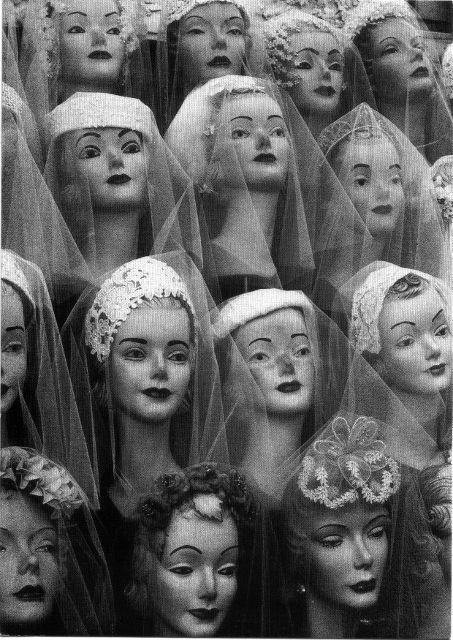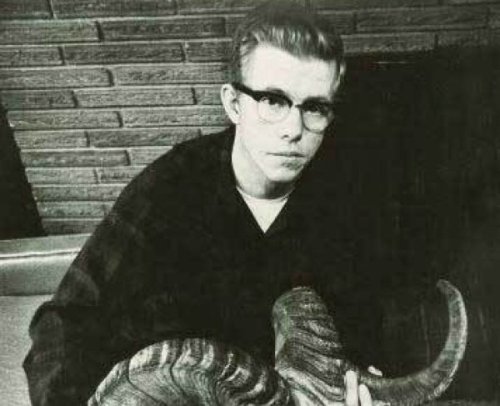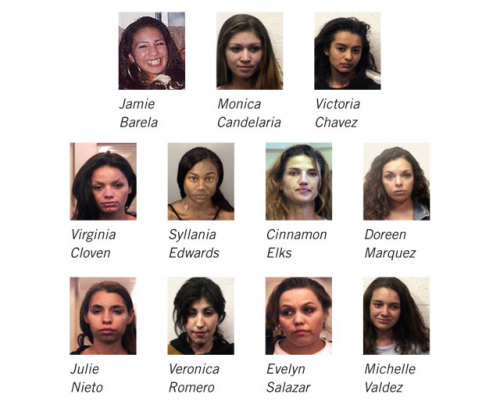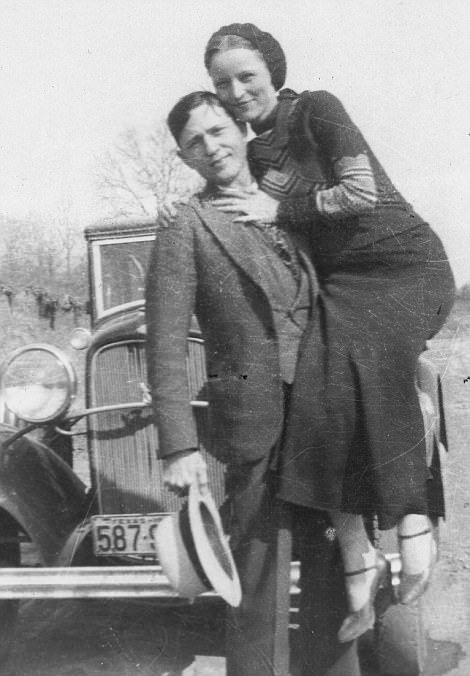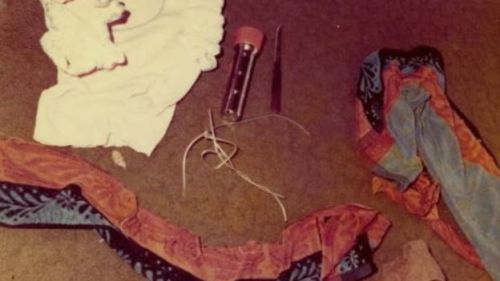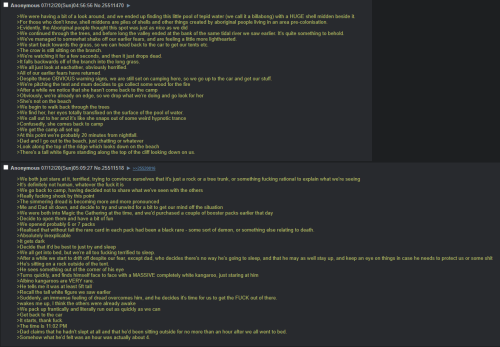#creepy places
Robert “Bob” Christian Hansena.k.a.“The Butcher Baker” targeted prostitutes and topless dancers in their mid-teens to early 40s. After soliciting them, he would abduct them and take them to a meat shack by bush plane. He later stated that he would let them live if they submitted to his sexual fantasies. The ones who didn’t were raped anyway, then stripped naked and set loose in the wilderness where he would hunt them with a .223 hunting rifle. After finally killing them, he would take pieces of jewelry from them as trophies and bury the bodies in the area, marking the burial sites on a map. The women he didn’t kill would be raped and forced into having oral sex with him or sexually assaulted with the handles of hammers and broomsticks.
Post link
In 2007, Russian serial killer Alexander Pichushkin was convicted of killing 48 people. Most of his murders occurred in the early 2000s. He would lure people into Moscow’s Bittsevsky Park by asking them to have a drink with him over his dog’s grave. He would then beat his victims to death with a blunt instrument and leave them in a sewer pit, sometimes while they were still alive.
He was arrested in 2006 after murdering a coworker who had told her son that she was going on a walk with Pichushkin. After his arrest, police found a chessboard with dates written on 62 of the 64 squares. Apparently, he was trying to kill as many people as there were squares on the board, which resulted in him being nicknamed “The Chessboard Killer.” In 2007, he was convicted of 48 counts of murder and 3 counts of attempted murder and sentenced to life in prison.
Post link
“The Frankford Slasher” is how the media christened a serial killer who operated in the Frankford neighborhood in Philadelphia, Pennsylvania, between 1985 and 1990. He is suspected to have killed nine women, between the ages of 28 and 74. All were sexually assaulted and stabbed to death. All the victims were seen shortly before their disappearance with a middle-aged white man and in one description, with a round face, glasses and a limp.
Some of the victims were seen in and around Frankford bars, especially Goldie’s, and some were believed for a time to be involved in prostitution. They were found in their apartments, under a car and in a yard. The killings escalated in brutality, including a victim who was stabbed 74 times. The killer posed as a counselor, offering advice and even renting an office in a nearby church.
A man called Leonard Christopher was convicted for the murder of one of the alleged victims, Carol Dowd, killed in 1990. Carol was the second to last victim and during her murder’s investigation, Christopher became a suspect.
theres are many people tho that don´t belive he is responsible: First, he doesn’t match the description. He was a 39 year old black man. Second, there was very little evidence linking him to Dowd and none to any of the other victims. Third, no motive or weapon could be offered during the trial. Furthermore, one of the alleged killings took place while Christopher was in jail (that of Michelle Dehner). They convicted him based on his false alibi and two witness’ testimonies that he had been seen with her earlier that day. He claims these testimonies were fabricated by the police.
Post link
In December 2006, a guy named Lorenzo Montoya, who lived in a mobile home in the desert less than three miles from the mass burial site, was shot and killed in an incident that was ruled self defense. It seemed that Montoya had picked up a sex worker on the Albuquerque strip and the sex worker’s boyfriend/pimp followed him in order to provide protection. He waited for the girl to come out of the mobile home and when he became alarmed by how long it was taking, he knocked on the door. Montoya came out with a gun and began firing at the boyfriend but missed. The boyfriend retreated to cover, pulled out his own gun and shot and killed Montoya. He then went into the mobile home and found his girlfriend dead by stranglation. No charges were filed against the boyfriend.
At the time this happened, law enforcement was not aware that local sex workers were disappearing. It was considered a “one off” crime that got minimal Medea attention. Two years laters, in 2009, 11 decomposed corpses were found buried in shallow graves. When the bodies turned up, investigators remembered the Montoya case. A look a Google Earth showed vehicle tracks leading directly from Montoya’s mobile home to the dump site. By that time, Montoya’s mobile home and all of his processions had been disposed of. Very little was known about Montoya but no ties could be found linking home to any of the women found buried at the site. Albuquerque investigators did not feel there was sufficient evidence to declare Montoya the perpetrator and close the case but he appears to be a much stronger suspect than any of the others developed.
Post link
Serial killer Jack Unterweger was born Johann Unterweger on August 16, 1950, in Austria. Abandoned by his prostitute mother, Jack lived for seven years with an alcoholic grandfather. He turned to crime in his early teens and was first arrested at 16 for assaulting a prostitute.
In 1976, Unterweger was convicted of the murder of Margaret Schaefer and sentenced to life in prison. While in prison, he learned to read and write, eventually earning literary respect both inside and outside the prison. In 1984, his prison autobiography Fegefeuer oder die Reise ins Zuchthaus (Purgatory or the Trip to Jail - Report of a Guilty Man) (1983) became a best-seller. Convinced that he was a reformed man, the state released him on parole in 1990.
After his release, Unterweger became a literary celebrity, appearing on talk shows and booking speaking engagements. Fegefeuer was made into a feature film, and the former murderer became a journalist.
Not everyone was convinced of his transformation, however. After a string of prostitute murders matched the details of the Schaefer crime, police put Unterweger under surveillance. After several months of detective work, they had gathered enough evidence to arrest him.
In 1992, Unterweger was detained, but even then, he continued to give interviews freely, proclaiming his innocence and calling upon his colleagues for support. Despite his chatty demeanor, the evidence against him was overwhelming, and he was found guilty of nine counts of murder in 1994. Soon after sentencing, Unterweger used the string from his prison jumpsuit to hang himself.
Post link
Robert Durst was the eldest child of Seymour Durst, whose family owned a prominent real-estate company. Robert studied economics at Lehigh University, and, after graduating in 1965, he attended UCLA, where he became friends with Susan Berman, the daughter of a mobster. Durst later returned to New York City, and in 1973 he married Kathleen McCormack, a dental hygenist. That year he also began to sporadically work at his family’s business. According to various reports, by 1981 Durst’s marriage was unraveling amid allegations that he was violent and controlling. On January 31, 1982, several months before she would have graduated from medical school, Kathleen disappeared. According to Robert, who did not report her missing until February 5, he had taken his wife to the train station in Katonah, New York, so she could return to the city after spending the weekend at the couple’s lakeside home in South Salem. Durst claimed no involvement in her disappearance, and, though his account of events raised questions, several people reported seeing or talking to Kathleen after she supposedly returned to Manhattan. During the media attention, Berman served as Durst’s unofficial spokesperson. Without leads or a body, the case eventually went cold.
In 2000 he remarried. In November that year, amid reports that his first wife’s case was being reopened, Durst moved to Galveston, Texas, where he disguised himself as a mute woman and rented an inexpensive apartment. A month later, Berman, who was to be interviewed by investigators in Kathleen’s disappearance, was found shot to death. The day her body was discovered, policed received a letter stating that a “cadaver” would be found at her address, which was misspelled as “Beverley Hills.”
Durst continued to live in Galveston, and on September 28, 2001, he came home to allegedly find his 71-year-old neighbor, Morris Black, in his apartment, watching television. Although the two were friends, Durst claimed that Black pointed a gun at him. He then said that, in fear for his life, he began struggling with his neighbor, and Black was fatally shot. Worried that he would be accused of murder, Durst dismembered the body, wrapped the pieces in garbage bags, and tossed them in Galveston Bay. He was later arrested, but while out on bail he fled to Pennsylvania. After a six-week manhunt, he was apprehended following his arrest for shoplifting at a supermarket. In 2003 Durst went on trial for murder but was acquitted after claiming self-defense. However, he later pled guilty to several minor charges, including jumping bond, and he served nearly six months in prison in 2005. Soon after being released, he violated parole and spent another 26 days in jail.
In 2006 Durst was reportedly paid $65 million to settle a lawsuit he had filed for his share of the family’s wealth. Several years later he agreed to be interviewed by Andrew Jarecki and Marc Smerling, documentarians who were making a series about Durst. He met with the filmmakers in 2010 and 2012. During the latter meeting, in a private moment off-camera when he apparently did not realize the microphone was still on, Durst said, “What the hell did I do? Killed them all, of course.” However, the filmmakers said that they did not became aware of the footage until some two years later. They also uncovered other evidence, including a letter from Durst to Berman in which Beverly was misspelled in the same way as in the letter sent to police in 2000. The Jinx: The Life and Deaths of Robert Durst premiered on HBO in February 2015, and the night before the last episode aired on March 15, Durst was arrested for Berman’s murder. In November 2016 Durst appeared at an arraignment hearing in Los Angeles, where he pled not guilty to murdering Berman.
Post link
Charlie Chop-off - Part 2 - Suspects
A suspect was apprehended and named in the press, L. Gonzales. He was reported to have been seen loitering in the area when some of the abductions occurred. Witnesses were called to the police station but did not confirm his identity. He was about to be let free, but a mob of protesters formed around the station. Having been made aware of his identity, the public was convinced that this man was indeed the perpetrator. Police established barricades around the precinct, but protesters climbed over the barriers and scaled roofs and police cars. The police decided they would have to sneak L. Gonzales out of the station disguised as a policeman. They dressed up a cop in civilian clothing and had him walk outside, escorted by other officers, while covering his face.
A few weeks after Steven Cropper’s murder, a man named Daniel Olivo was charged with molesting a 5-year-old boy after luring him into a secluded area in a nearby park. The boy escaped and ran to his father, and Olivo was discovered hiding in some bushes and arrested. He fit the suspect’s profile: he had a medium skin tone and walked with a limp. However, the police found that his movements did not match up with the murders, and he was dismissed as a suspect.
In May, 1974, Erno Soto, a patient at the Manhattan State Hospital, was apprehended during the attempted abduction of a young Puerto Rican boy. The boy escaped and was seen running down the street yelling. Soto was detained by neighbors until the police arrived. Soto was a “frequent flier” at Manhattan’s mental institutions. He had been intermittently institutionalized starting in 1969. Reportedly Soto and his wife (who were both Puerto Rican) had become estranged but reunited. Sometime after their reunion, Soto’s wife gave birth to a black baby boy. Soto and his wife appeared to reconcile despite this, but as the boy approached his 8th birthday, Soto’s mental state began to deteriorate. He was hospitalized multiple times for “uncontrollable violence”, and had been arrested on several occasions for burglary and narcotics possession. He had also been treated for heroin addiction. Soto’s physical description matched the description given by witnesses. In addition, the main exit from the hospital was near to where some of the boys’ bodies were found, and he had relatives living in the areas near some of the others.
After his arrest, a witness was found by the police who claimed that he had seen Soto with Steven Cropper on the day of his death. The surviving boy from the attempted 1972 murder was shown a line-up including Soto but was not able to identify him. He did say that Soto looked “similar” to his attacker, but nothing conclusive. Soto confessed to police that he stalked young black boys in the area, and confessed to killing Steven Cropper, but not any of the other boys. He reportedly did tell police that God told him “to make little boys into girls”. He was reportedly institutionalized on the dates of one of the murders, but this is easily explained by the fact that security at the institution was lax, and Soto had a weekend pass. The police were certain that they had their man. Soto was charged with the murder of Steven Cropper; however, at trial he was diagnosed with schizophrenia and found not guilty by reason of insanity. He was remanded to a high security mental institution. After his institutionalization, the murders stopped. In the end, nobody was found guilty of any of the Charlie Chop-Off murders, but police considered the cases closed.
Post link
Warning: the content of these murders is graphic and unsettling.
Charlie Chop-off - PART 1 - The victims
Between 1972 and 1974, the bodies of 5 young black and Puerto Rican boys were discovered in Manhattan, New York. Another boy was assaulted and left for dead. The victims were stabbed or slashed, and their genitals were mutilated and, in most cases, removed entirely.
Douglas Owens, age 8. He was the first victim, discovered in March of 1972 after he went missing while running errands on a rainy day. He was stabbed 38 times and his genitals were cut almost all the way off, but not removed. His shoes were off when he was found. There was evidence of potential sexual assault. He was discovered just two blocks from his home, his body left on a rooftop.
An unnamed victim was assaulted in April and left for dead in the hallway of an apartment building. He was identified as a 10-year-old black boy but not named in the press. Like Douglas Owens, he was attacked on a rainy day while running errands. Like Owens, his shoes were removed. He was sexually assaulted, stabbed, gutted, and his genitals removed. The perpetrator took the genitals with him when fleeing the scene. He survived but was unable to provide the police with much information about his assailant, due to the trauma he experienced. The police were able to develop a very vague profile of the suspect: Spanish or Italian, with a mole on his cheek, thin, neither light-skinned nor dark-skinned, possibly with a limp. He called himself “Michael” and lured the boy to him with the promise of 50 cents. This victim’s genitals were later recovered in a park by the police, who found a group of children playing with them.
Wendall Hubbard, age 9. He vanished while playing in a yard near his home in East Harlem in October 1972. His mother called him to come inside, and, when he didn’t make it into the apartment, she promptly reported him missing. He was discovered on the rooftop of his own apartment building a few hours later, which was just six blocks away from where Douglas Owens’ body was found. He had been stabbed 17 times in the abdomen, neck, and chest. His body was mutilated and his genitals were removed and apparently carried away by the attacker. There was evidence that he had been sexually assaulted.
Luis Ortiz, age 9. He went missing in March 1973 after purchasing milk and bread at a local store. Discovered in the basement of an apartment building, he was the first victim who was not black; he was a dark-skinned Puerto Rican boy. He was also stabbed 38 times in the back, neck, and chest, and his genitals were removed and taken by the perpetrator. Multiple witnesses reported seeing the boy’s abductor, resulting in the development of a composite sketch.
Steven Cropper, age 8. He was discovered on the 6th floor of a tenement house in August 1973. His murder was different from that of the other victims. He was slashed with a razor blade, rather than stabbed with a knife. The cause of death was a severed artery in his arm. There was no mutilation of the genitals in his case; however, his body was posed in a “sexually suggestive” manner that was indicative of assault. His shoes were removed and placed by his body. Nonetheless, the police concluded that he must be the victim of the same killer, reasoning that it would be too coincidental for two killers with similar victim profiles and MOs to be operating in the same area.
Post link
Bonnie Parker first met Clyde Barrow through a mutual friend in January 1930, when Bonnie was 19 years old. Barrow, who was 20, was a volatile ex-con and a wanted man who had vowed that he would never go back to prison. After spending much time together during the following weeks, their budding romance was interrupted when Clyde was arrested and convicted of several criminal charges pertaining to auto theft.
Once back in prison, Clyde’s thoughts immediately turned to escape. By this time, he and Bonnie had fallen deeply in love, and Clyde was overtaken by heartache. Sharing his sentiments, much to the dismay of her mother, a lovesick Bonnie was more than willing to help the man she called her soulmate, and soon after his conviction she smuggled a gun into the prison for him.
On March 11, 1930, Clyde used the weapon to escape with his cellmates, but they were captured a week later. Clyde was then sentenced to 14 years of hard labor, eventually being transferred to Eastham State Farm, where he was repeatedly sexually assaulted by another inmate.
In February 1932, Clyde was released from prison when his mother successfully convinced the judge in his case to grant him parole. He and Bonnie reunited, and Clyde embarked on a crime spree with a small group of men, robbing banks and small businesses. Bonnie joined the gang in April, but was captured during a failed robbery attempt and imprisoned for two months. While she awaited trial, she passed the time by writing poetry, much of which chronicled her relationship with Clyde.
In June 1932, the court failed to convict Bonnie after she stated she was kidnapped by the Barrow gang, and she was thus released from custody. She immediately rejoined Clyde, and the couple resumed their crime spree with other gang operatives, taking part in robberies that spanned several states. By 1933, the gang was wanted for several murders, including the deaths of various law enforcement officials. Despite a massive deployment by law enforcement officials that by late 1932 included the FBI, the infamous couple managed to elude authorities and avoid capture for nearly two years, becoming two of America’s most well-known outlaws along the way.
After the murder of a police officer in Commerce, Oklahoma, by gang member Henry Methvin, Bonnie and Clyde were pursued for weeks. In the morning of May 23, 1934, they drove into an ambush on Highway 154 in Louisiana, and were killed by police in a hail of bullets. The ambush was in fact set up by the father of Methvin, who wanted leniency for his son.
By the time of their deaths, Bonnie Parker and Clyde Barrow were so famous that souvenir-seekers at the scene attempted to make off with locks of their hair, pieces of their clothing and even one of Clyde’s ears. Their bodies were eventually returned to Dallas, and despite their wishes to be buried side by side, they were interred in separate cemeteries. Thousands traveled to each of their funerals, with newspapers publishing extra editions to mark the services.
Despite their violent crimes and the dogged, ramshackle realities of their existence, Bonnie and Clyde have been heavily romanticized by the media. Their sensational story has seen numerous retellings, including the 1967 Arthur Penn film Bonnie and Clyde, a 2011 Broadway musical and a 2013 made-for-TV miniseries .Their bullet-riddled car remains on display at a resort/casino outside of Las Vegas, Nevada.
In early 2018, production began on a Netflix film about Bonnie and Clyde, this one told from the point of view of the authorities tasked to stop their crime spree.
Post link
Cruz, an 18-year-old restaurant worker, invited a friend over, who later recalled being startled at least twice by strange noises outside and in the garage. But the teenager dismissed the sounds, and her friend left near midnight.
The next morning, a real estate agent coming to show the home discovered Cruz in her bedroom. She’d been raped and bludgeoned to death, her teeth shattered and her face bloodied beyond recognition. There were tennis shoe prints in the soil outside the house and a heavy wrench missing from the backyard.
Investigators initially homed in on the last people to see Cruz alive and her former boyfriends, but the case went cold. Although police assembled a rape kit, DNA testing of crime scene evidence was in its infancy, and the kit was placed in storage for many years.
They didn’t know it in 1986, but Janelle was the last known victim of the Golden State Killer, ending the decade-long crime spree of one of the most sadistic serial killers and rapists in American history.
Since the early 1970s, an unknown assailant had been terrorising various parts of California from Sacramento to south of Los Angeles, earning him different nicknames in each crime spree: the “Visalia Ransacker”, the “East Area Rapist” and the “Original Night Stalker”. He often selected single-storey homes, accessed them by climbing through windows, and bound his victims’ hands. He blinded women with a flashlight and threatened to kill them. He took trophies from his victims - pieces of jewellery, cufflinks. Before he raped a 13-year-old girl, he placed dinner plates on the back of the girl’s mother in a separate room, and warned he would cut the daughter’s fingers off if he heard the plates clatter.
Janelle Cruz had been dead for a decade when it was discovered that the DNA sample from her body matched DNA from the Harringtons and Manuela Witthuhn. Over time the DNA profile also matched with the Domino and Sanchez murders, and the Smiths, as well as to two Contra Costa County rape cases from the late 1970s. Although law enforcement has had a DNA profile for the Golden State Killer for decades now, a matching profile was never found in any national DNA database, meaning the man had never been caught for a subsequent crime where his DNA would have been collected.
According to the Sacramento Bee, the site GEDmatch is a place for people to find long lost relatives, and has a database of 800,000 DNA profiles. Sacramento District Attorney Chief Deputy Steve Grippi confirmed that a family member of the killer had used the service, and they were able to isolate him as a suspect and collect “discarded” DNA on two occasions: once they collected multiple samples from a trash can outside the killer’s home in Citrus Heights. Some other time, as the killer walked into the craft store, police swabbed the driver’s side handle of his car. They finally had a match. Is name was Joseph DeAngelo Jr. He is accused of killing 12 and raping at least 50 women in total.
Post link

